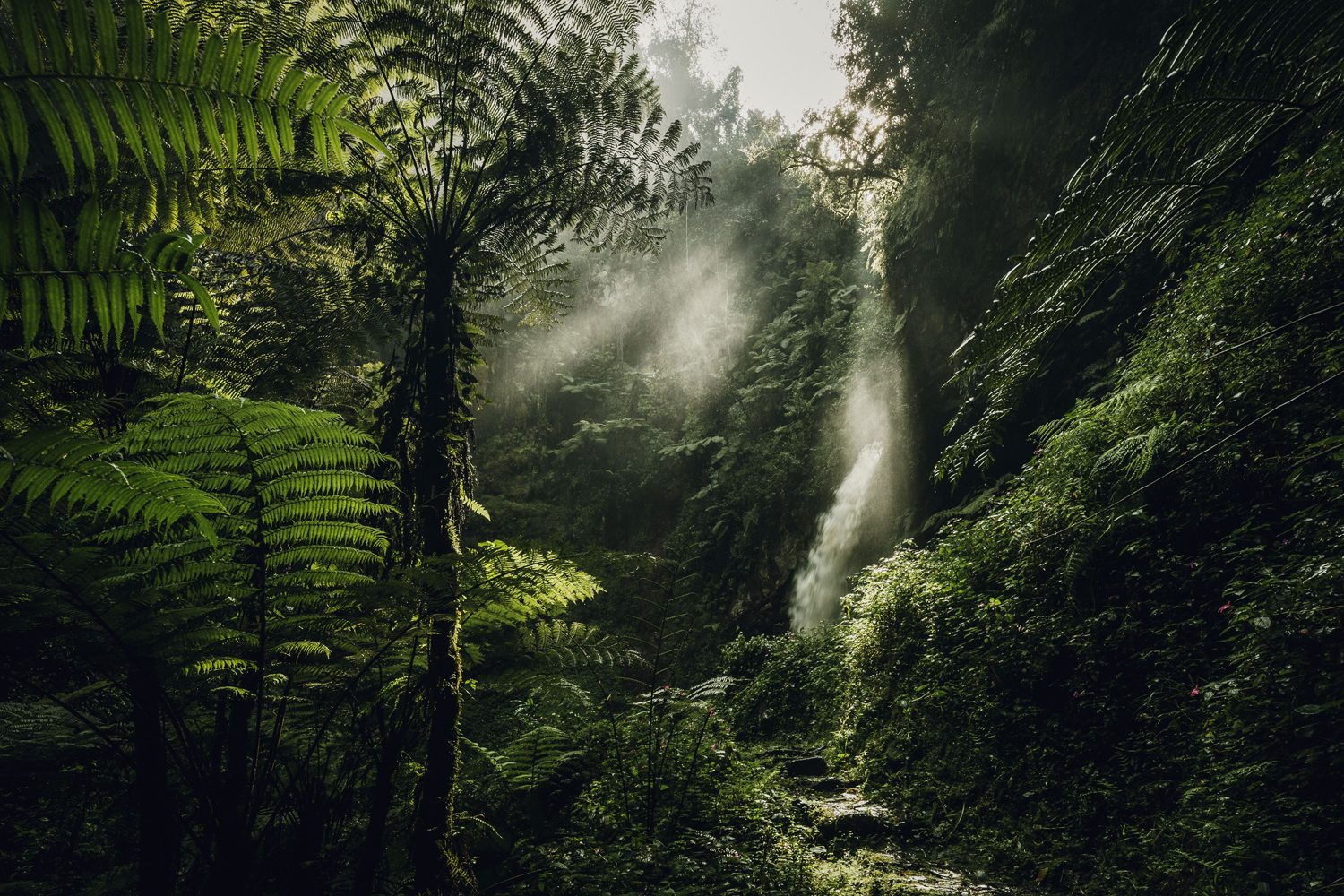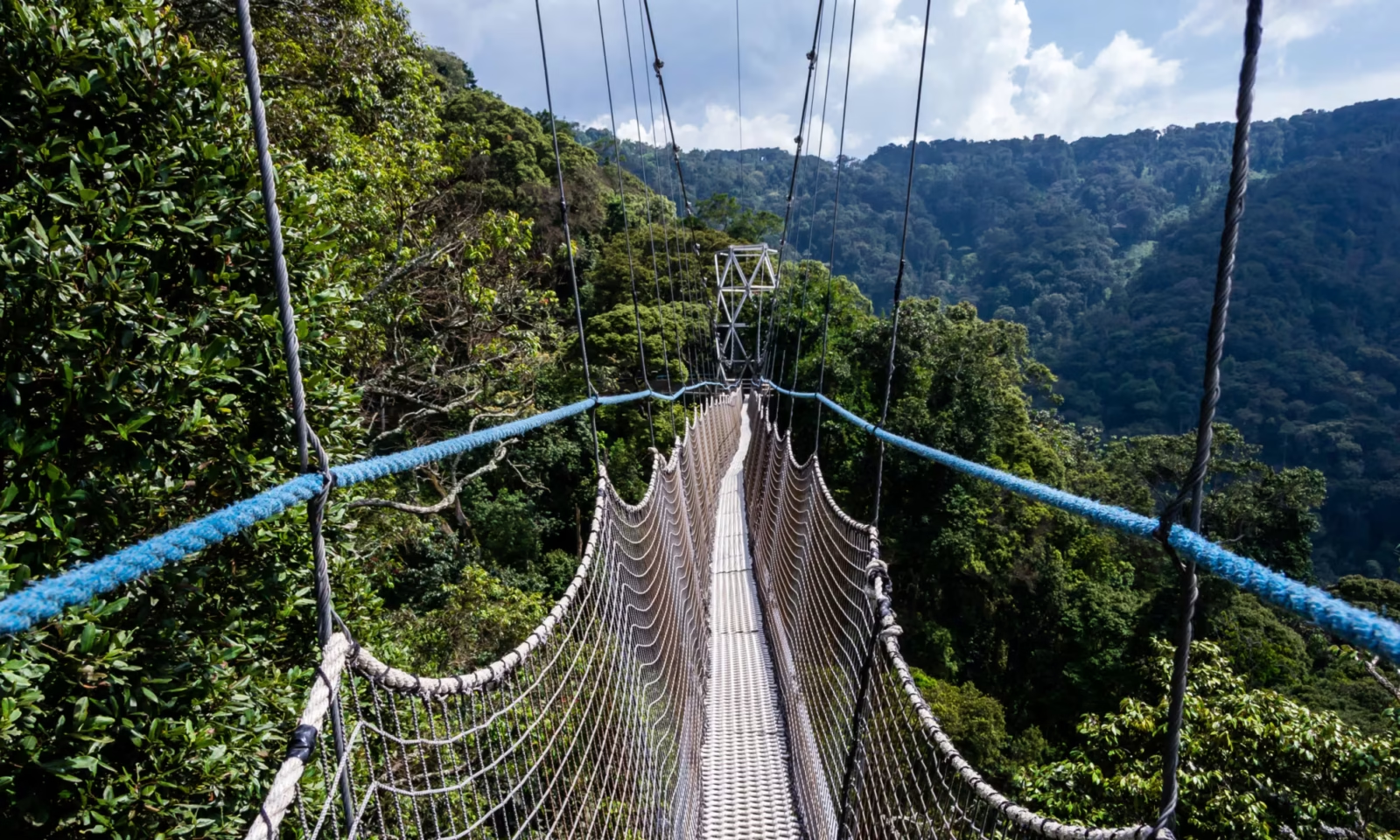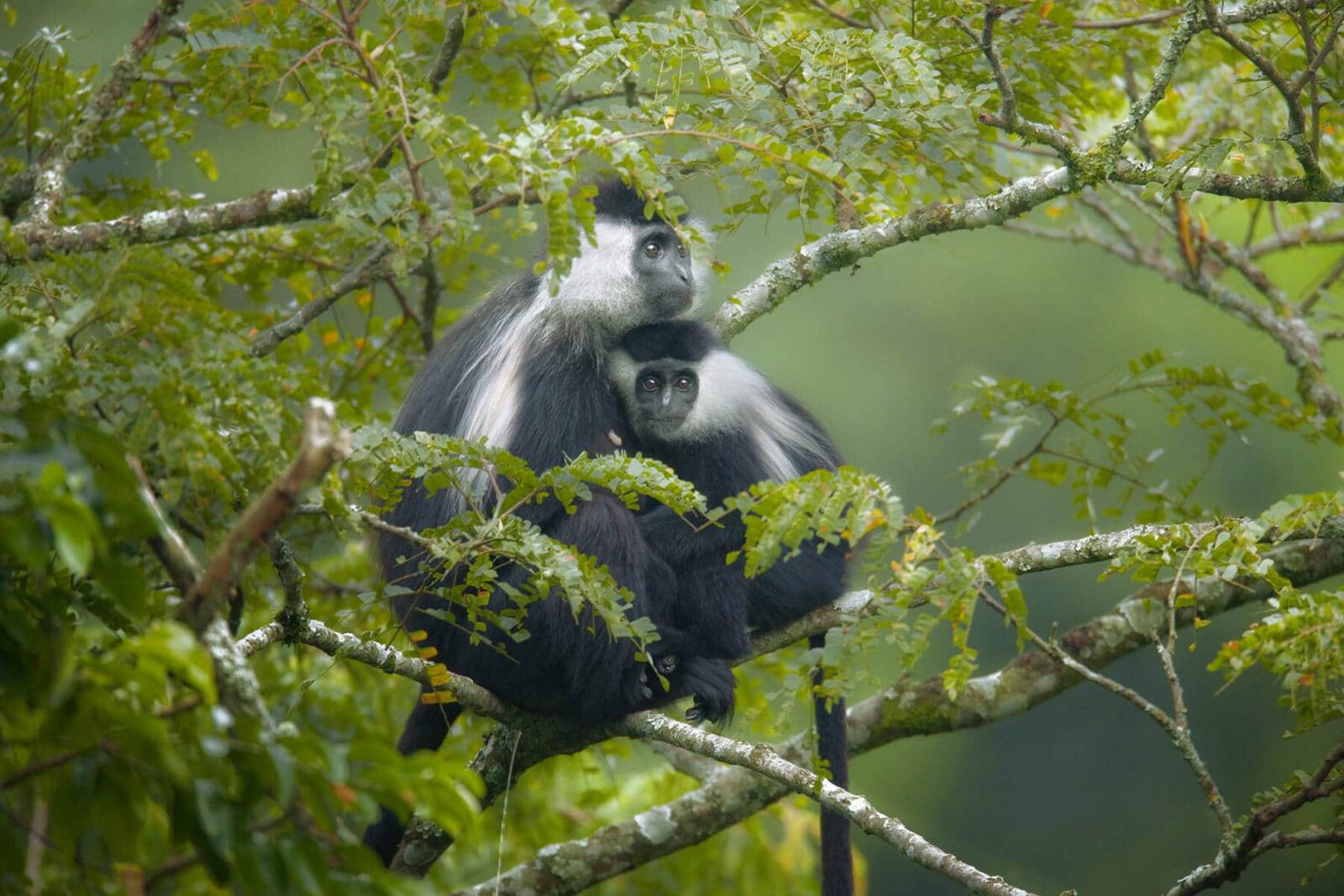
Nyungwe National Park— Guide
Nyungwe National Park – Rwanda’s Emerald Rainforest of Life
In Rwanda’s southwestern highlands, where the air is cool and mist drifts through ancient treetops, lies one of Africa’s oldest and most enchanting rainforests — Nyungwe National Park. Spanning more than 1,000 square kilometers, this pristine montane forest is a world of towering mahoganies, hidden waterfalls, rare primates, and a symphony of birdsong that fills the air like a living orchestra.
Nyungwe is not just a national park — it’s a sanctuary of biodiversity and serenity, where visitors experience Africa in its most peaceful, untouched form. With its network of hiking trails, chimpanzee tracking, and the continent’s most spectacular canopy walkway, Nyungwe offers a rare opportunity to step deep into nature’s heart.
A Primal Forest of Wonders
Nyungwe National Park lies within the Albertine Rift, one of the most biodiverse regions on Earth. It is a remnant of Africa’s ancient equatorial forests that once stretched across the continent, surviving through centuries as a refuge for countless species.
This high-altitude rainforest sits at elevations between 1,600 and 2,950 meters, creating a cool, misty climate that nourishes its lush vegetation — from orchids and ferns to moss-covered trees. Every path feels sacred, every corner alive with whispers of life unseen yet deeply felt.
Wildlife and Primates – A Realm of Rare Encounters
Nyungwe is best known for its incredible diversity of primates — 13 species in total, making it one of Africa’s premier destinations for primate tracking.
Chimpanzees are the stars of the park. Two habituated communities, one near Uwinka and another near Cyamudongo Forest, can be visited with experienced trackers. The trek begins at dawn, when the forest echoes with the high-pitched calls and drumming of chimps as they awaken in the canopy. Following their movements through the forest is both exhilarating and humbling, a true connection to our closest wild relatives.
Beyond chimps, Nyungwe is home to other fascinating primates:
L’Hoest’s monkeys – rare, shy, and endemic to the Albertine Rift.
Black-and-white colobus monkeys – often seen in large, acrobatic troops.
Red-tailed monkeys, silver monkeys, olive baboons, and the elusive Owl-faced monkey.
The richness of primate life gives Nyungwe an almost magical energy — a forest constantly alive with motion and sound.
Birdwatching Paradise
For bird enthusiasts, Nyungwe is a dream. Over 310 bird species have been recorded, including 29 Albertine Rift endemics found nowhere else on Earth.
Key species include:
Ruwenzori turaco
Grauer’s warbler
Stripe-breasted tit
Regal sunbird
Handsome francolin
Great blue turaco, a large, vividly colored bird often heard before seen.
The forest’s mixture of altitude zones creates varied habitats, making every hike a chance to spot new and extraordinary birds.
The Canopy Walkway – A Walk Above the Forest
Perhaps Nyungwe’s most thrilling experience is its Canopy Walkway, the only one of its kind in East Africa. Suspended 60 meters above the ground and stretching over 160 meters, this bridge gives visitors a bird’s-eye view of the forest canopy — an experience that’s both exhilarating and profoundly beautiful.
From here, the forest seems endless. Mist curls through treetops, monkeys swing below, and hornbills glide across the valley. The walkway is part of the Igishigishigi Trail, which also features stunning viewpoints and botanical treasures.
Hiking and Nature Trails – Discovering the Hidden Forest
Nyungwe offers more than 15 well-maintained hiking trails, each revealing a different aspect of the park’s natural wonder.
Isumo Waterfall Trail: A scenic 2-hour hike leading to a dramatic waterfall surrounded by ferns and butterflies.
Kamiranzovu Swamp Trail: A serene wetland ecosystem filled with orchids and rare amphibians.
Bigugu Trail: A steep climb to Nyungwe’s highest peak, offering panoramic views of Lake Kivu and distant volcanoes.
Ngabwe Trail: Great for birdwatching and spotting colobus monkeys.
Imbaraga Trail: A full-day trek for adventurers, leading to multiple waterfalls.
These trails vary in difficulty and duration, making Nyungwe suitable for both casual walkers and serious hikers. Every path immerses you in the forest’s timeless rhythm — a world of rustling leaves, damp earth, and distant primate calls.
Flora and Unique Ecosystems
Nyungwe’s ecological diversity is astonishing. The park contains more than 1,000 plant species, including 140 orchids, 200 tree species, and a wide range of ferns and medicinal plants.
Its ecosystem transitions from lowland rainforest to bamboo groves and subalpine vegetation, supporting an incredible array of insects, amphibians, and small mammals. This living laboratory continues to attract scientists studying Africa’s biodiversity and climate history.
Cultural Connections and Community Experiences
The areas around Nyungwe are home to the Banyarwanda and Bafumbira communities, who have lived in harmony with the forest for generations. Cultural tours give visitors insight into Rwanda’s rural life and traditions.
Experiences include:
Tea Plantation Visits: Nyungwe’s tea fields, especially around Gisakura, offer scenic views and opportunities to learn about tea harvesting and processing.
Traditional Dances and Crafts: Local cooperatives perform cultural dances and sell handcrafted baskets, helping sustain community livelihoods.
By supporting community tourism, visitors directly contribute to conservation efforts that protect the park and uplift its surrounding people.
Best Time to Visit Nyungwe National Park
Nyungwe is open year-round, but weather conditions influence the trekking experience:
June to September & December to February: Dry seasons with easier hiking conditions — best for chimpanzee tracking and canopy walks.
March to May & October to November: Wet seasons bring lush green scenery and active birdlife — ideal for photography and birding, though trails can be muddy.
Temperatures remain cool (10–25°C) throughout the year due to the park’s elevation, so layered clothing is recommended.
Getting There
Nyungwe is located about 225 kilometers (6–7 hours by road) from Kigali. The scenic drive passes through rolling hills, tea plantations, and charming villages. Travelers can also combine Nyungwe with Volcanoes National Park or Lake Kivu for a complete Rwandan circuit.
For convenience, charter flights from Kigali to Kamembe Airport (near Cyangugu) are available, followed by a short drive to the park.
Accommodation Options
Visitors can choose from a range of comfortable lodges and eco-camps located near the park’s main entrance at Gisakura.
Luxury Lodges: Set on forested slopes or tea estates with panoramic views, offering high comfort and guided nature experiences.
Mid-range Lodges: Ideal for nature lovers, blending comfort with rustic charm.
Guesthouses and Eco-lodges: Perfect for budget travelers and researchers seeking a closer connection to the environment.
Many lodges emphasize sustainability and community partnerships, ensuring tourism supports conservation and local development.
Conservation and Significance
Nyungwe National Park is one of Africa’s most important conservation strongholds. It protects a vital watershed that supplies water to much of Rwanda and beyond. The park’s management focuses on ecosystem preservation, anti-poaching patrols, and community education.
Ecotourism here is carefully managed to maintain the forest’s delicate balance while providing local communities with sustainable livelihoods. Each visit contributes directly to the ongoing protection of one of the continent’s last remaining montane rainforests.



